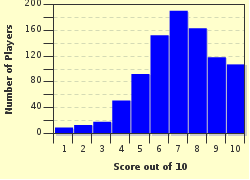Quiz Answer Key and Fun Facts
1. In the late 1700s Luigi Galvani, noticed that frogs legs twitched when stimulated by external electric sources. In 1800 Alessandro Volta built on this work and created the first what?
2. Which device, used to amplify or to switch electronic signals, is a key component in most electronic equipment?
3. What invention in the 1960s changed communication by carrying light along its length with greater efficiency than metal wire?
4. Which technology, developed in the 1940s, was inspired by Morse code?
5. Which technology, which changed the face of home entertainment, emerged the victor in a format war during the late 1970s and early 1980s?
6. Fairchild's Channel F was the first cartridge based game console and was the forerunner to which famous games console, which offered 'Space Invaders' to the world?
7. The personal computer was invented in the 1970s. It was made possible by two major technical innovations. The first was the integrated circuit which was developed in 1959. What was the other major component within the integrated circuit?
8. The acronym GPS stands for Global Positioning Satellite.
9. In 1978, Akio Morita, chairman of Sony wanted to listen to opera during long flights. He commissioned the design of the first portable music player, which was called what?
10. Mobile or cell phone technology has certainly changed the way we communicate. It also offered a new way of communicating beyond phone calls, by using up to 160 text characters. What is the acronym of the technical name of this method of communication?
Source: Author
EmmaF2008
This quiz was reviewed by FunTrivia editor
crisw before going online.
Any errors found in FunTrivia content are routinely corrected through our feedback system.


